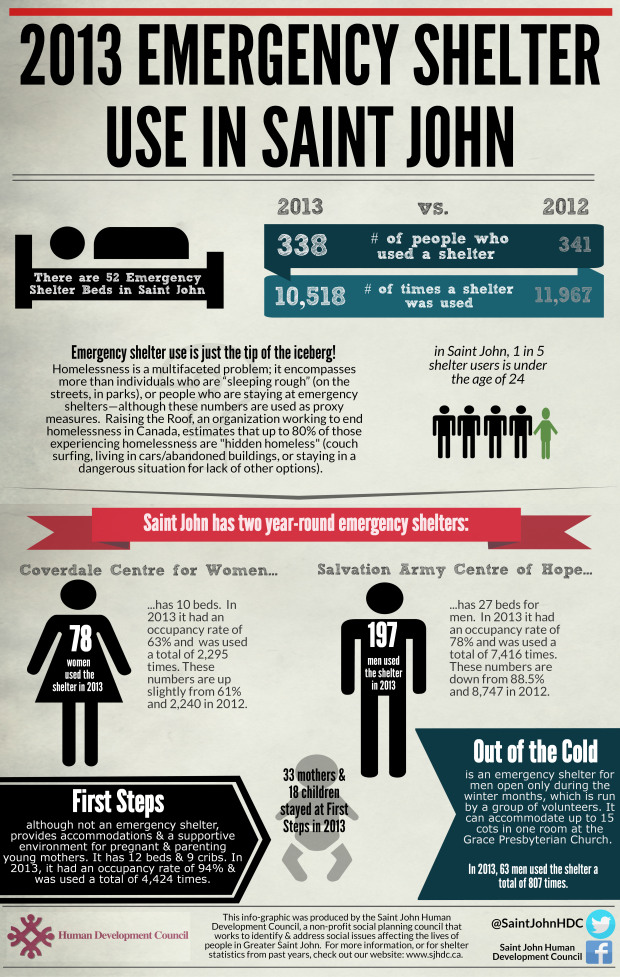In towns and cities across Canada, shelters are the primary response communities have to homelessness. Emergency shelters provide homeless people with temporary housing and access to much needed resources. These resources may include food, informal counselling, and some form of healthcare. Shelters provide homeless individuals with access to a network of resources that alleviate some of the difficulties they face. Today, shelters are the cornerstones of service provision in most communities. The below infographic, published by the Saint John Human Development Council, provides us with some details regarding emergency shelter availability and use in Saint John in 2012 and 2013.
In February 2014, the Salvation Army announced that they would be closing down the Centre of Hope, a men's shelter – New Brunswick’s largest and oldest emergency shelter. The main reason for closing down was a lack of funding available to continue the shelter operations. At the time of the publication of the infographic, it remained unclear as to how the same services would be made available to those who had been previously served by the shelter. Fortunately, a new homeless shelter, Outflow, has been operating in place of the Centre of Hope. Outflow is a ‘damp shelter’. This means that it keeps it doors open to men who may be intoxicated, by alcohol or other drugs.
While news about the closing of a shelter is often alarming, it does present us with the opportunity to take a step back and consider alternate methods to ending homelessness, as well as ways that previous barriers can be addressed through new programs. Emergency responses to homelessness, such as shelters, are temporary solutions, best understood as a means through which existing risks can be mitigated. Homelessness in Canada is usually addressed in a treatment first approach, where individuals living in homelessness wait till housing is available, or are ‘treated’ before being deemed fit for living in housing. It doesn’t have to be this way.
Housing First is an example of an alternative to the status quo, combining immediate access to permanent housing with wrap-around supports. The presence of supports, in the form of health care, employment and education are all essential for the Housing First approach. There are several causes of homelessness and in order to become solutions, approaches towards solving homelessness need to be multifaceted.
Research has shown that Housing First is affordable, sustainable and effective. While emergency shelters provide individuals with immediate relief in the short-term, Housing First is solution that focuses on long-term gains and helping individuals become independent again. When adopting this approach in communities like Saint John where there is a lack of affordable housing, there needs to be support from other sectors. Housing can become affordable through rent support, or through investing in the construction of affordable housing units. It’s important then to view Housing First as more than just a program by seeing it as part of a more prudent approach to ending homelessness.


